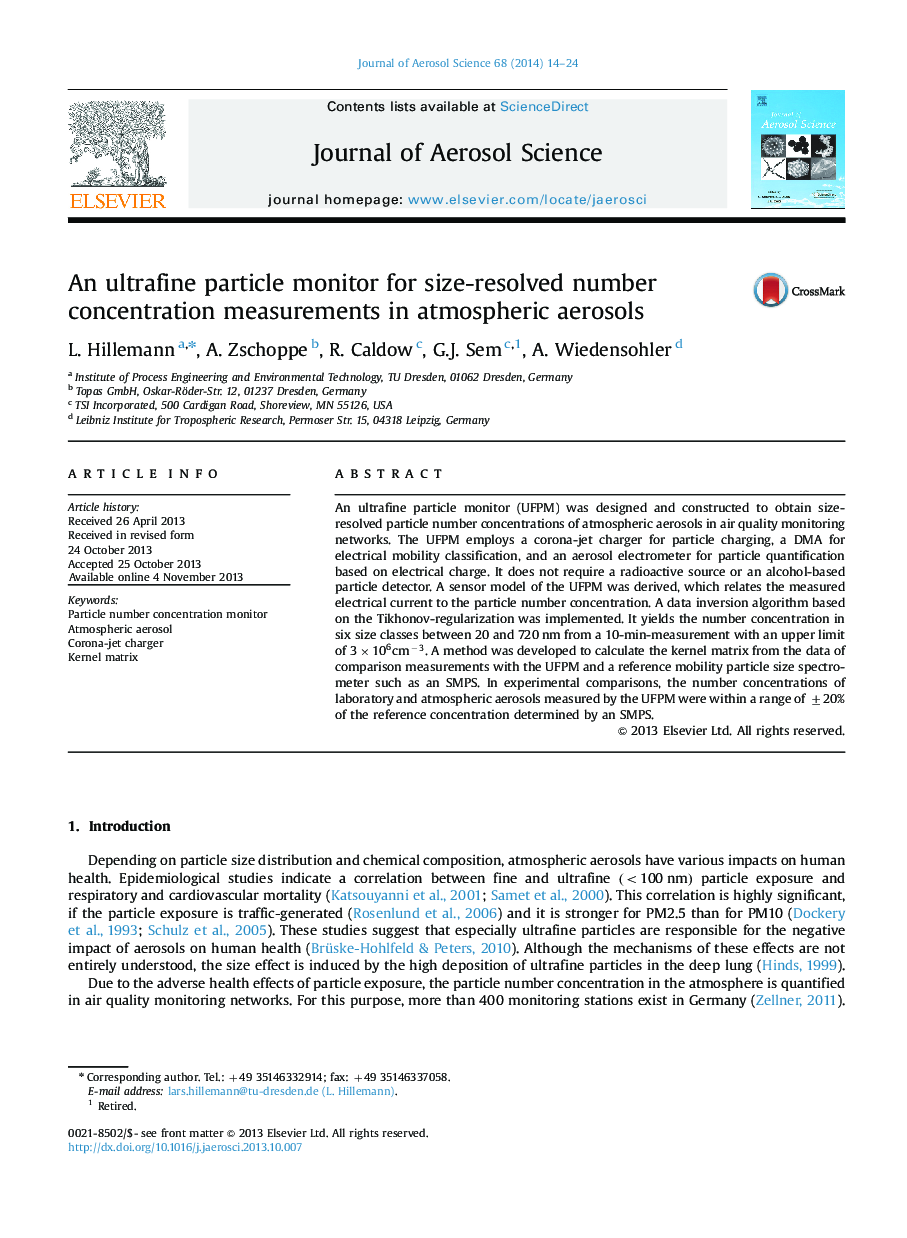| Article ID | Journal | Published Year | Pages | File Type |
|---|---|---|---|---|
| 4452419 | Journal of Aerosol Science | 2014 | 11 Pages |
•A monitor was constructed to obtain number concentration of atmospheric aerosols.•It employs a corona-jet charger, a DMA and an aerosol electrometer.•The data inversion algorithm bases on the Tikhonov-regularization.•The kernel matrix was derived from comparison measurements.•Comparison measurements showed good agreement with reference (SMPS).
An ultrafine particle monitor (UFPM) was designed and constructed to obtain size-resolved particle number concentrations of atmospheric aerosols in air quality monitoring networks. The UFPM employs a corona-jet charger for particle charging, a DMA for electrical mobility classification, and an aerosol electrometer for particle quantification based on electrical charge. It does not require a radioactive source or an alcohol-based particle detector. A sensor model of the UFPM was derived, which relates the measured electrical current to the particle number concentration. A data inversion algorithm based on the Tikhonov-regularization was implemented. It yields the number concentration in six size classes between 20 and 720 nm from a 10-min-measurement with an upper limit of 3×106cm−33×106cm−3. A method was developed to calculate the kernel matrix from the data of comparison measurements with the UFPM and a reference mobility particle size spectrometer such as an SMPS. In experimental comparisons, the number concentrations of laboratory and atmospheric aerosols measured by the UFPM were within a range of ±20% of the reference concentration determined by an SMPS.
